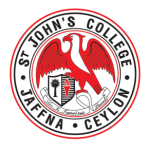History of Hostelling
December 31, 2022 2023-08-10 11:15History of Hostelling
Contact Us
The need for a Boarding House for St. John’s was felt in 1889. The first Boarding House was erected with the funds collected from the Old Boys to perpetuate the memory of Mr. Evarts. This was built on the additional piece of land which was bought in 1876 by Rev. D. Wood. In October of 1901, three of the four wings of the Boarding House were completed and were occupied. In 1904 the final wing of the Boarding House was completed. The boarders organized the Boarders’ Union in September 1909. This was carried out by forming six committees to direct the activities of the members. The committees were represented the following segments of the boarding life – Literary, Social, Athletic, Garden, Sunday-school, and the Scripture Union.
The proceeds of the sale of a piece of a land gifted by Dr.J.M.Handy were used for the build of a new dormitory for the senior boarders and it was built in honor of Rev.G.T.Fleming, the Principal of the College from 1880 to 1889. In 1920, the Thompson Boarding House, was constructed in memory of Rev. Jacob Thompson’s long Principalship. This enabled the College boarders to be divided into three distinct grades- the senior, intermediates, and juniors. During 1942, the Principal introduced the noble idea of the Cottage System of boarding houses. This plan provided the Boarding House master and his family to be given quarters adjoining the boarding houses so that the family of the Boarding Master and the boarders lived as members of one big family.
In 1953, Crossett Memorial building fund was launched for the construction of a hostel. Dr. & Mrs. Rajasingham gifted Rs 30,000/= towards this building fund. Dr. Rajasingham was a distinguished Old Boy and his gift was the biggest the college had ever received until then. It was decided to name part of the new hostel as the Rajasingham Block and the other part as the Crossette Block. As more funds were required for this purpose, the College had Science Exhibition and Fairs in 1953, 1955 & 1957. In 1954, Mahendra Theatre, sited opposite the College was purchased and it was funded by the Old Boys. This was converted into a hostel and was named after Rev.Henry Peto Hostel, thus fulfilling one of the main resolutions adopted by the Old Boys at the Jubilee Celebrations. This was ceremonially opened by Mr.C.Suntharalingam.
In 1955, the new hostel was opened by the Bishop of Colombo on the 24th of June 1955. It was named the Memorial Block. It had four wings, one was named in memory of Dr.A.Rajasingham, another named in memory of his son Alison Rajasingham, his only child who died young, the third wing was named in memory of Mr. T. H. Crossette and the fourth wing was named in memory of Rev. C. C. Handy. This block had all modern amenities with four rooms, three for the Boarding Masters and one for the Senior Prefect. The Foundation stone for the Rao Sahib James Chelvanayagam Chinnappa Block for Hostel, Gymnasium, Health Centre, and Classrooms for instrumental music was laid by Ven. S. P. Nesakumar, Archdeacon of Jaffna and Manager of the College, on Saturday the 19th of March 2011. This block was dedicated to the glory of God and the spread of knowledge by the Rt. Rev. Dhiloraj Ranjit Canagasabey, 15th Bishop of Colombo, and declared open by Mrs. Harshini Canagasabey on Wednesday the 7th of March 2012.
It was the vision of Dr. (Mrs.). Malathi Rajasingham along with other Old Boys of the school and well-wishers that made possible for the construction of this building. The College is grateful for the generous support of Rs 10.82M, by the members of Dr.Malathi & Arjuna Rajasingham family towards the construction of Arjuna Bartlett Rajasingham Hostel, James Chandrasekaran Virasinghe Chinnappa Hostel, and Lucia Navamani Virasinghe Chinnappa Chapel that are housed in the Rao Sahib James Chelvanaygam Chinnappa Hostel Block. James Chelvanaygam Chinnappa was a student of our college and later upon graduation from Presidency College came back to teach Mathematics at our college until June 1908, till he went to Madras to further his career as an educationalist and teacher. He lectured in Philosophy and Mathematics at the Presidency College and later helped lead the Education Department of the Madras Presidency as its Deputy Director of Public Instruction. He was decorated by India with the title of Rao Sahib before his death in 1937.


